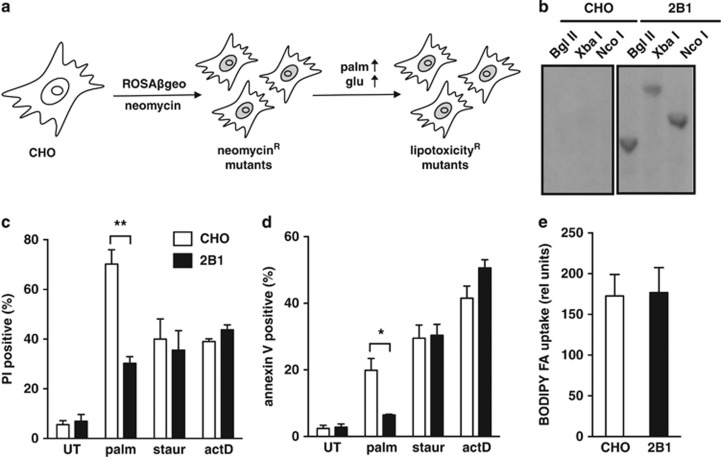Figure 1.
2B1 cells are resistant to metabolic stress. (a) Wild-type (CHO) cells were mutagenized by transduction with the ROSAβgeo retroviral promoter trap, and mutants were selected by treatment with neomycin. Palmitate-resistant mutants were subsequently selected by growth in high-glucose (glu) media supplemented with 500 μM palmitate (palm) for 48 h. (b) CHO and 2B1 mutant genomic DNA was digested with restriction enzymes Bgl II, Xba I, or Nco I, and Southern blot was hybridized with a 32P-labeled probe against the integrated ROSAβgeo retroviral sequence. (c, d) CHO (open bars) and 2B1 mutant (filled bars) cells were treated with 500 μM palm for 48 h or with 80 nM staurosporine (staur) or 2 μM actinomycin D (actD) for 24 h. Cell death was assayed by propidium iodide (PI) staining (c) and apoptosis was assessed by simultaneous annexin V and PI staining (d) with flow cytometric analysis of 104 cells/sample and a minimum of n=3 samples for each condition. Data is expressed as mean fluorescence+standard error (S.E.) (e) CHO and 2B1 mutant cells were incubated with BODIPY-labeled fatty acid (BODIPY FA) for 1 min. Uptake was measured by flow cytometric analysis of 104 cells/sample, with n=3 samples for each cell type. Data are expressed as mean fluorescence+S.E. (relative (rel) units). *P<0.05, **P<0.005 for 2B1 versus CHO

